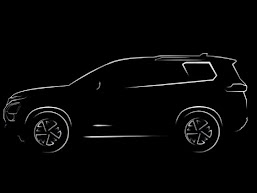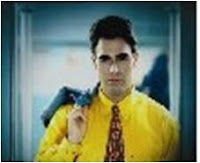Brand : Allen Solly
Company : Madura Garments
Ad Agency : Ogilvy
Brand Analysis Count : # 458
Allen Solly is a brand that changed the dressing habits of Indian executives. Launched in 1993, Allen Solly attained a near cult status in a highly competitive readymade market within a short period of time.
Allen Solly's heritage dates back to 1744 when this brand was created by William Hollins & Co . In 1990, the brand was taken over by Madura Garments which launched it in India in 1993. Madura Garments which was looking for an unconventional brand targeting young professionals found a fitting brand in Allen Solly.
Madura Garments rightly spotted a need for a casual work-wear among the young professionals. The growing young working class and the rise of the IT clan of employees further reinforced the potential of a relaxed formal wear.
Allen Solly entered the market with the blockbuster concept of Friday Dressing. The idea was not new. Globally the there was a marked trend towards relaxed workwear and Allen Solly pioneered that concept in the Indian market.
Allen Solly launched office wears in colored shirts and Khaki trousers which became an instant hit. For the first time, Indian consumers were exposed to the idea of relaxed formals. Indian consumers took the bait and rushed to color coordinate their wardrobe with enthusiasm.
Not stopping by these, Allen Solly further experimented with
unconventional shades like beige and tan. Soon the logo attained cult status among the Indian consumers . Allen Solly was in a way announced the coming of age of the mature global Indian workforce.
In 1995, the brand launched ultra bright colors in the formal segment. Colors like yellow, brown , red etc was introduced as formal wears. The yellow shirt featured in the TV commercial became a big hit among the consumers.
The brand further reinforced its cult status with the launch of wrinkle free cottons and checked formal shirts. The young restless generation lapped up the unconventional formals and used it as an expression of their personal freedom.
From the sales data,the company noticed that there was a huge demand for trousers of size 26-28 from women. Taking a cue, Allen Solly launched its range of women wear which was well accepted by the target group.
The competitors soon caught up with the concept of Friday Dressing. Every brand launched similar ranges and colors and soon relaxed formal wear became part of normal work wear. Allen Solly was valued at Rs 250 crore brand by now.
In 2009, the brand went for a repositioning exercise. Allen Solly found that there is a shift in the demographics of the target segment. While the workforce of 1990s were predominantly of the age group of 26 +, now youngsters of age 22-23 yrs have started entering the workforce. The brand wanted to be more relevant to the new young working class. Also the brand somehow wanted to attract consumers beyond the workplace.The worldview of the young consumers have also changed. Earlier success in life was measured based on work. But now the success is more holistic . Allen Solly wanted to reflect this change of perspective of the young consumers.
This thinking prompted the brand to change its positioning from a work-wear to a fashion brand. The brand positioned itself as a casual brand for all occasions.

To reflect the change in positioning, the brand changed its brand campaigns.In 2009, the brand launched its famous " I Hate Ugly " campaign targeting the youth.
The basic proposition was to reflect the irreverent , non-compromising attitude of youngsters towards life. This in-your- face communication struck a chord with the consumers and critics and the brand was able to break the earlier association of the brand as a formal wear.
The brand created a big noise in the market with I Hate Ugly campaign and it will be interesting to see how the brand carries forward the momentum.
Allen Solly also changed the tagline to " My World , My Way " to reflect the new brand proposition. My World , My Way reflects the strong individualistic view of the youngsters who own their world and create their own rules.
In a way, the brand has completely shed its earlier DNA. No longer the brand is associated with formal wears. The brand literally exited the category of relaxed formal wears which it has created. One reason can be that category itself became irrelevant since all brands have their own line of relaxed formal wear. Brands like Color Plus has successfully established itself in that category .
In the new avatar, Allen Solly is targeting the ever- fickle young generation whose concept of fashion changes by the day. The brand has identified a gap for a premium fashion brand specifically targeting this segment. Although brands like Levi's have a strong equity in the market, there is a gap for a player like Allen Solly.
Allen Solly's repositioning is a loss to the generation who saw the Friday Dressing avatar of this brand. Lets us hope that Allen Solly will repeat what it has done to the Work-wear market in 1993.
























